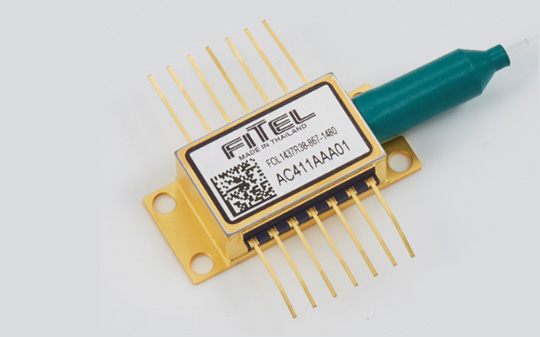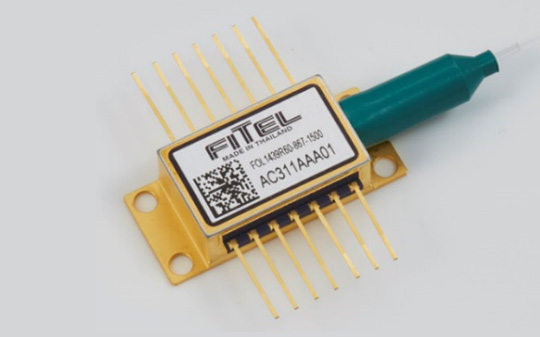Raman amplification is an optical amplification method that uses induced Raman scattering to amplify light with a wavelength about 100 nm longer than the excitation light.
Unlike erbium doped fiber amplifiers (EDFAs), the optical fiber that serves as the line itself is used as the amplifying medium, thus reducing SNR(Signal-Noise Ratio) degradation due to optical fiber loss and making it suitable for long-distance transmission.
Pump light source (pump laser)
Since the wavelength of the signal light is in the 1550 nm band, semiconductor lasers used as pump light sources are 1420-1490 nm, about 100 nm shorter than that. Fabry-Perot (FP) semiconductor lasers with high output power of several hundred mW or more are widely used, and their wavelength is stabilized by a fiber Bragg grating (FBG).
Backward and forward pump
Pump light is introduced into an optical fiber in two directions: backward pump, in which the pump light is in the opposite direction of the signal light, and forward pump, in which the pump light is in the same direction as the signal light. In backward pump, the signal and pump light face each other, so the pump light noise (fluctuation of output power) is averaged out, whereas in forward pump, the pump light travels at the same speed as the signal, so the pump light noise easily affects the signal. For this reason, the pump light source used for forward pump must have low noise. Compared to backward pump, which is already widely used in practical applications, forward pump is technically more difficult, but it is expected to be realized because it is superior in improving transmission characteristics and maximizing the effect of Raman amplification.

Main Products
Light source for Raman amplifiers combining a Fabry-Perot type laser with a fiber-based grating (FBG) to stabilize external wavelength

Chip-on-Carrier (CoC) modulator integrated semiconductor laser light source with built-in semiconductor optical amplifier (SOA)


